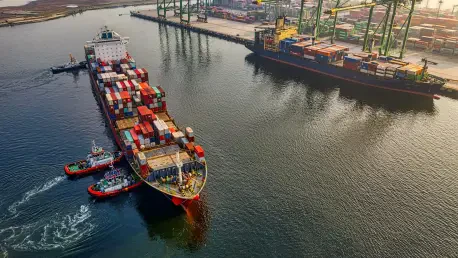The intricate fabric of the global shipping industry is witnessing a transformative shift due to one-way container leasing, a concept gaining ground amid overwhelming logistical challenges. This trend, once regarded as a specialized market, is emerging as a potential remedy for the persistent supply chain disruptions plaguing American ports. The mounting issue of mismatched supply and demand, exemplified by a surplus of empty containers, threatens to spiral into an industry-wide crisis. The viability of one-way leasing is becoming increasingly clear as it introduces a novel approach to such pressing issues.
Exploring the Mechanism of One-Way Container Leasing
Bridging Supply Chain Gaps
One-way container leasing addresses logistical hurdles by rethinking container movement strategies. Instead of returning empty containers to their point of origin, this method sends them to where they are needed most, reducing inefficiency and costs. This is particularly valuable in regions like the United States, where ports struggle with an overflow of empty containers. By optimizing these dormant assets, leasing could improve shipping efficiency.
Adoption of such innovative solutions has been championed by industry leaders like Osmo Lahtinen, CEO of OVL Container. Lahtinen emphasizes the importance of revolutionizing traditional practices with emerging technologies and increased fleet availability. By incorporating artificial intelligence to streamline operations and maximize container fleet utilization, companies can navigate the complexities of modern logistics. Integrating technology not only alleviates cost pressures but also ensures a competitive edge in a rapidly evolving industry.
Environmental and Economic Benefits
Transitioning to one-way container leasing aligns with the global movement toward sustainability. By minimizing the need to transport empty containers back to their origins, the practice reduces carbon footprints across international supply chains. This caters to growing environmental regulations and supports corporate responsibility efforts.
Economically, this leasing approach has proven financially beneficial. Companies like One Way Lease and Titan Containers are at the forefront of this transformation, promoting digitalization and sustainable investments. By expanding an accessible depot network, they enhance container accessibility, providing solutions to soaring freight costs and economic inflation. These advancements offer hope that shipping can evolve to adapt to challenges and foster a more resilient future.
Challenges and Opportunities in Modern Shipping
Overcoming Traditional Industry Norms
Leading companies are initiating a paradigm shift by deviating from conventional norms, such as two-way container flows. This shift is crucial for maintaining momentum amidst existing challenges. The emphasis on technology and sustainability reflects a broader trend toward “next practice” becoming “best practice” in container management. As firms invest in innovative models, the benefits extend beyond operational efficiency, influencing the competitive landscape favorably.
However, the transition does not come without hurdles. The high costs associated with freight transport and economic fluctuations present significant barriers. The geopolitical landscape also contributes uncertainties that impede growth. Despite these obstacles, the forward momentum remains fueled by a conviction that transformation is imperative for industry survival.
Embracing Technological Innovation
Maintaining a competitive advantage in the shipping sector necessitates adopting cutting-edge technology. Artificial intelligence opens avenues for enhancing decision-making and optimizing resource allocation. It underscores the critical transformation required for addressing distribution and planning inefficiencies. Digital platforms streamline processes by providing integrated solutions, enabling firms to adapt swiftly to market demands.
Strategic investment in analytics and data-driven platforms empowers shipping companies to predict market trends and respond accordingly. The power of informed decision-making dramatically improves organizational agility and customer service quality. Companies committed to integrating such innovations bolster their resilience and readiness for unforeseen challenges, securing a sustainable and prosperous industry future.
Paving the Way for Future Resilience
The global shipping industry is undergoing a notable change due to one-way container leasing, a concept gaining traction amid ongoing logistical challenges. Once seen as niche, this approach is emerging as a promising solution to the stubborn supply chain disruptions affecting American ports. The persistent issue here is the mismatch between supply and demand, as evidenced by an excessive number of empty containers, which could escalate into an industry-wide crisis if not addressed. One-way leasing shows potential by offering a fresh perspective on these urgent problems. By allowing containers to be leased and moved in a single direction rather than requiring a round trip, this method helps streamline logistics, reducing bottlenecks, and ensuring more efficient use of container resources. As global trade evolves, one-way container leasing might pave the way for new efficiencies, transforming the dynamics of shipping and offering relief to overstretched ports worldwide.









